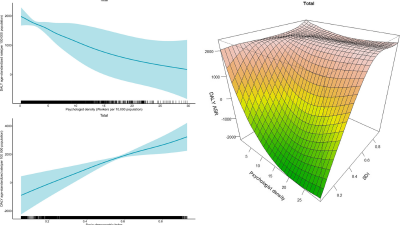In a world where global social media often leaves us feeling disconnected from those physically closest to us, hyperlocal digital networks are emerging as powerful tools for rebuilding genuine community connections. These platforms focus exclusively on specific neighborhoods, creating digital spaces that translate into real-world relationships and stronger geographic communities.
What Makes Hyperlocal Networks Different?
Unlike mainstream social media that connects us with people worldwide, hyperlocal platforms deliberately limit their scope to small geographic areas. This intentional constraint creates something remarkable: digital interactions that actually strengthen physical communities rather than replacing them.
The magic of these platforms lies in their ability to blend digital convenience with local relevance. When you log into a hyperlocal app, you’re not scrolling through updates from high school acquaintances across the country or influencers in other continents. Instead, you’re discovering that the family three doors down needs a babysitter next Saturday, or learning about a community garden starting just around the corner.
The Community Impact of Going Hyperlocal
These neighborhood-focused digital tools are revitalizing communities in tangible ways. Local businesses find new customers literally around the corner. Neighbors who might never have spoken despite living on the same street for years discover shared interests and concerns. Community initiatives gain momentum when they can easily reach the exact people who benefit from them.
At BuildBonding, we’ve seen how digital connections can transform into meaningful real-world relationships when properly focused on geographic communities. The impact extends beyond convenient digital interactions to create lasting social capital in neighborhoods.
Popular Hyperlocal Platforms Transforming Communities
Several platforms have emerged as leaders in the hyperlocal space, each with slightly different approaches to community building:
Neighborhood apps like Nextdoor have created spaces where residents share everything from safety concerns to furniture exchanges. Meanwhile, community marketplace apps facilitate hyperlocal commerce, keeping economic activity within neighborhood boundaries and supporting local businesses.
Event-based platforms help neighbors discover activities happening just blocks away, while issue-specific apps tackle local challenges ranging from street maintenance to community governance. Some neighborhoods even develop custom platforms tailored to their specific community needs and culture.
The Psychology Behind Successful Hyperlocal Networks
What makes these platforms work when so many digital tools seem to pull us apart rather than bring us together? The most successful hyperlocal networks understand something fundamental about community psychology: people crave belonging, especially to places and groups they can physically experience.
These platforms tap into our natural desire to know our surroundings and connect with those who share our immediate environment. When digital interactions lead to in-person meetings at local parks, businesses, or community centers, the relationship between technology and community becomes symbiotic rather than competitive.
Challenges and Considerations
Despite their benefits, hyperlocal networks face unique challenges. Privacy concerns become more pronounced when digital sharing occurs among neighbors. Moderation requires careful balance—too little can lead to harmful content, while excessive control can stifle authentic community discourse.
Economic sustainability presents another challenge, as most hyperlocal platforms must find revenue models that don’t compromise the community-first mission that makes them valuable in the first place.
Building Better Hyperlocal Networks
The most effective hyperlocal platforms share common characteristics. They focus on solving genuine local needs rather than creating artificial engagement. They respect privacy while facilitating connection. Most importantly, they view digital interaction as a means to an end—real-world community building—rather than an end in itself.
The Future of Hyperlocal Digital Networks
As technology advances, hyperlocal networks are evolving. Augmented reality features are beginning to overlay digital community information onto physical spaces. AI-powered recommendations are connecting neighbors based on complementary needs and offerings. Integrated local governance tools are enabling more participatory community decision-making.
The most exciting developments combine digital convenience with physical proximity, reinforcing rather than replacing the geographic communities that provide our most immediate sense of belonging.
Conclusion
While global social media connects us with the world, hyperlocal digital networks reconnect us with something equally valuable—our immediate surroundings and the people who share them. By creating digital tools specifically designed to strengthen geographic communities, these platforms are helping reverse the isolation paradox of modern technology.
The future of healthy communities may well depend on this balanced approach: using digital tools not to escape our physical surroundings, but to more deeply engage with them and the people who make them special.





